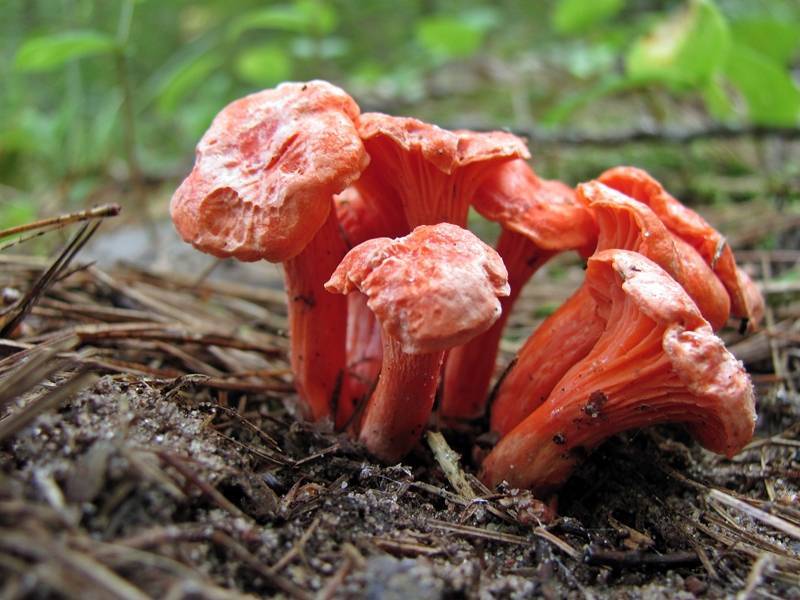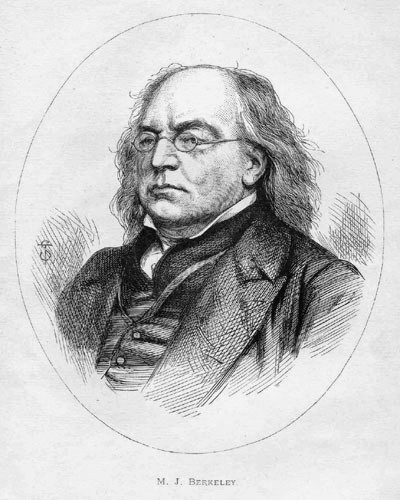|
Cantharellus
''Cantharellus'' is a genus of popular edible mushrooms, commonly known as chanterelles, a name which can also refer to the type species, '' Cantharellus cibarius''. They are mycorrhizal fungi, meaning they form symbiotic associations with plants, making them very difficult to cultivate. Caution must be used when identifying chanterelles for consumption due to lookalikes, such as the jack-o'-lantern mushroom ('' Omphalotus olearius'' and others), which can make a person very ill. Despite this, chanterelles are one of the most recognized and harvested groups of edible mushrooms. Many species of chanterelles contain antioxidant carotenoids, such as beta-carotene in ''C. cibarius'' and ''C. minor'', and canthaxanthin in ''C. cinnabarinus'' and ''C. friesii''. They also contain significant amounts of vitamin D. The name comes from Greek κάνθαρος, '' kantharos'' 'tankard, cup'. [...More Info...] [...Related Items...] OR: [Wikipedia] [Google] [Baidu] |
Cantharellus Cibarius
''Cantharellus cibarius'' (Latin: ''cantharellus'', "chanterelle"; ''cibarius'', "culinary") is a species of golden chanterelle mushroom in the genus ''Cantharellus''. It is also known as girolle (or ''girole''). It grows in Europe from Scandinavia to the Mediterranean Basin, mainly in deciduous and coniferous forests. Due to its characteristic color and shape, it is easy to distinguish from mushrooms with potential toxicity that discourage human consumption. A commonly eaten and favored mushroom, the chanterelle is typically harvested from late summer to late fall in its European distribution. Chanterelles are used in many culinary dishes, and can be preserved by either drying or freezing. An oven should not be used when drying it because can result in the mushroom becoming bitter. Taxonomy At one time, all yellow or golden chanterelles in North America had been classified as ''Cantharellus cibarius''. Using DNA analysis, they have since been shown to be a group of related s ... [...More Info...] [...Related Items...] OR: [Wikipedia] [Google] [Baidu] |
Cantharellus Lateritius
''Cantharellus lateritius'', commonly known as the smooth chanterelle, is a species of edible fungus in the mushroom family Cantharellaceae. An ectomycorrhizal species, it is found in Asia, Africa, and North America. The species has a complex taxonomic history, and has undergone several name changes since its first description by American mycologist Lewis David de Schweinitz in 1822. The fruit bodies of the fungus are brightly colored yellow to orange, and usually highly conspicuous against the soil in which they are found. At maturity, the mushroom resembles a filled funnel with the spore-bearing surface along the sloping outer sides. The texture of the fertile undersurface (hymenium) of the caps is a distinguishing characteristic of the species: unlike the well-known golden chanterelle, the hymenium of ''C. lateritius'' is much smoother. Chemical analysis has revealed the presence of several carotenoid compounds in the fruit bodies. Taxonomy The species was first ... [...More Info...] [...Related Items...] OR: [Wikipedia] [Google] [Baidu] |
Cantharellus Formosus
''Cantharellus formosus'', commonly known as the Pacific golden chanterelle, is a fungus native to the Pacific Northwest region of North America. It is a member of the genus ''Cantharellus'' along with other popular edible chanterelles. It was distinguished from the similar '' C. cibarius'' of Europe in the 1990s. It is orange to yellow, meaty and funnel-shaped. On the underside of the smooth cap, it has gill-like ridges that run down onto its stipe, which tapers down seamlessly from the cap. The false gills often have a pinkish hue. It has a mild, sweet odor. It is solitary to gregarious in coniferous forests, fruiting from July to December. The Pacific golden chanterelle is the most important commercially harvested ''Cantharellus'' species in the Pacific Northwest. This chanterelle has been designated Oregon's state mushroom, due to its economic value and abundance. Description Fruiting bodies of ''C. formosus'' range from wide, with cap colors varying depending on ligh ... [...More Info...] [...Related Items...] OR: [Wikipedia] [Google] [Baidu] |
Cantharellus Subalbidus
''Cantharellus subalbidus'', the white chanterelle, is a fungus native to California and the Pacific Northwest region of North America. It is a member of the genus ''Cantharellus'' along with other popular edible chanterelles. It is similar in appearance to other chanterelles except for its cream to white color and orange bruising. ''Cantharellus subalbidus'' may form a mycorrhizal association with species of pine, hemlock, Douglas-fir, and Pacific madrone. ''C. subalbidus'' has been found to be more common in old-growth forests than in younger forests. Description The mushroom is white to cream in color, later darkening to yellow-orange. The cap is wide, flat to depressed, becoming infundibuliform (vaselike) with age. The stalk is 2–7 cm tall and 1–5 cm wide, tapered, with yellow-brown spots due to bruising and age. The spores are white, elliptical, and smooth. Similar species Several other species of chanterelle may be found in western North America: * ... [...More Info...] [...Related Items...] OR: [Wikipedia] [Google] [Baidu] |
Cantharellus Cascadensis
''Cantharellus cascadensis'', the Cascade chanterelle, is a fungus native to the Pacific Northwest region of North America. It is a member of the genus ''Cantharellus'' along with other popular edible chanterelles. It is named after the Cascade Range, where it was formally described in 2003. History Both ''Cantharellus cascadensis'' and '' C. roseocanus'' were first considered to be varieties of ''Cantharellus cibarius'', then of '' C. formosus''. ''C.'' ''cascadensis'' was genetically classified as its own species in 2003. Description The cap is usually bright yellow with a smooth or wooly surface. The stipe is club-shaped to bulbous. Similar species Several other species of chanterelle may be found in western North America: *'' C. californicus'' *'' C. formosus'' *'' C. roseocanus'' *'' C. subalbidus'' Additionally, ''Hygrophoropsis aurantiaca'', '' Chroogomphus tomentosus'', and species in the genera ''Craterellus'', '' Gomphus'', '' Omphalotus'', and ''Polyozellus ... [...More Info...] [...Related Items...] OR: [Wikipedia] [Google] [Baidu] |
Cantharellus Cinnabarinus
''Cantharellus cinnabarinus'', the red chanterelle, is a fungus native to eastern North America. It is a member of the genus ''Cantharellus'' along with other chanterelles. It is named after its red color, which is imparted by the carotenoid canthaxanthin. It is edible An edible item is any item that is safe for humans to eat. "Edible" is differentiated from "eatable" because it does not indicate how an item tastes, only whether it is fit to be eaten. Nonpoisonous items found in nature – such as some mushroo ... and good, fruiting in association with hardwood trees in the summer and fall. Description ''Cantharellus cinnabarinus'' is recognized by its distinctive flamingo-pink or bright orange and red colors (imparted by the carotenoid canthaxanthin) and the presence of false gills underneath the cap. Ecology Widely distributed in Eastern Northern America; found mostly on the ground in broadleaf and mixed broadleaf/conifer forests; usually scattered or occurring i ... [...More Info...] [...Related Items...] OR: [Wikipedia] [Google] [Baidu] |
Cantharellus Minor
''Cantharellus minor'' is a fungus native to eastern North America. It is one of the smallest of the genus ''Cantharellus'', which includes other edible chanterelles. It is suspected of being mycorrhizal, found in association with oaks and moss. Recently, ''C. minor'' has been reported from semi-evergreen to evergreen forests in the Western Ghats, Kerala, India forming ectomycorrhizal associations with tree species like ''Vateria indica'', ''Diospyros malabarica'', ''Hopea parviflora'', and ''Myristica'' species. The cap of ''C. minor'' ranges from wide and is convex and umbonate, often shallowly depressed, becoming funnel-shaped in some. The yellowish gills are decurrent ''Decurrent'' (sometimes decurring) is a term used in botany and mycology to describe plant or fungal parts that extend downward. In botany, the term is most often applied to leaf blades that partly wrap or have wings around the stem or petio ..., and fade to yellowish white in maturity. The ... [...More Info...] [...Related Items...] OR: [Wikipedia] [Google] [Baidu] |
Cantharellus Persicinus
''Cantharellus persicinus'', the peach or pink chanterelle, is a fungus native to the Appalachian Mountains, Appalachian region of eastern North America. Like other popular edible chanterelles, it is a member of the genus ''Cantharellus''. It is suspected of being mycorrhizal, found in association with Quercus, oaks and Tsuga canadensis, eastern hemlock. Molecular phylogenetics, DNA analysis has shown ''C. persicinus'' to be a genetically valid species. References External links * Cantharellus, persicinus Fungi of North America Edible fungi Taxa named by Ron Petersen Fungi described in 1986 {{Agaricomycetes-stub ... [...More Info...] [...Related Items...] OR: [Wikipedia] [Google] [Baidu] |
Cantharellus Appalachiensis
''Cantharellus appalachiensis'' is a fungus native to eastern North America in the genus ''Cantharellus'', which includes other popular edible chanterelles. The cap color varies from brown to yellow, often with a brown spot on the cap at maturity. ''C. appalachiensis'' is mycorrhizal and is found in hardwood forests. The scientific name ''C. appalachiensis'' is after the Appalachian Mountains The Appalachian Mountains, often called the Appalachians, (french: Appalaches), are a system of mountains in eastern to northeastern North America. The Appalachians first formed roughly 480 million years ago during the Ordovician Period. The .... References appalachiensis Fungi of North America Edible fungi Taxa named by Ron Petersen Fungi described in 1971 {{Agaricomycetes-stub ... [...More Info...] [...Related Items...] OR: [Wikipedia] [Google] [Baidu] |
Edible Mushroom
Edible mushrooms are the fleshy and edible fruit bodies of several species of macrofungi (fungi which bear fruiting structures that are large enough to be seen with the naked eye). They can appear either below ground ( hypogeous) or above ground ( epigeous) where they may be picked by hand. Edibility may be defined by criteria that include absence of poisonous effects on humans and desirable taste and aroma. Edible mushrooms are consumed for their nutritional and culinary value. Mushrooms, especially dried shiitake, are sources of umami flavor. Edible mushrooms include many fungal species that are either harvested wild or cultivated. Easily cultivated and common wild mushrooms are often available in markets, and those that are more difficult to obtain (such as the prized truffle, matsutake, and morel) may be collected on a smaller scale by private gatherers. Some preparations may render certain poisonous mushrooms fit for consumption. Before assuming that any wild mu ... [...More Info...] [...Related Items...] OR: [Wikipedia] [Google] [Baidu] |
Omphalotus
''Omphalotus'' is a genus of basidiomycete mushroom, in the family Marasmiaceae, formally circumscribed by Victor Fayod in 1889. Members have the traditional cap and stem structure. They are saprobic, and fruit in clumps on the ground, adjacent to host trees. The best known and type species is the jack-o'-lantern mushroom ''(Omphalotus olearius)''. Species of ''Omphalotus'' have been mistaken for chanterelles. All ''Omphalotus'' species are presumed poisonous, causing gastrointestinal symptoms. Some ''Omphalotus'' species have bioluminescent properties. Taxonomy Victor Fayod originally erected the genus with '' Pleurotus olearius'' and '' P. eryngii'' as its principal species in 1889, placing it in a ''tribus'' ("alliance") with the genera ''Pleurotus'' and '' Pleurotellus''. The relationships of the genus have become clearer with genetic analysis. Rolf Singer placed it and the related ''Lampteromyces'' in the Boletales due to the presence of the pigment variegatic ac ... [...More Info...] [...Related Items...] OR: [Wikipedia] [Google] [Baidu] |
Omphalotus Olearius
''Omphalotus olearius'',Singer R (1948) In: ''Pap. Mich. Acad. Sci.'' 32: 133 ('1946'). commonly known as the jack-o'-lantern mushroom, is a poisonous orange gilled mushroom that to an untrained eye appears similar to some chanterelles. It is notable for its bioluminescent properties. It is found in woodland areas in Europe, where it grows on decaying stumps, on buried roots or at the base of hardwood trees. It has also been reported from the Western Cape Province, South Africa. A similar, but phylogenetically distinct species found in eastern North America is '' Omphalotus illudens''. Unlike chanterelles, ''Omphalotus olearius'' and other ''Omphalotus'' species contain the toxin illudin S, and are poisonous to humans. While not lethal, consuming this mushroom leads to very severe cramps, vomiting, and diarrhea. Description The jack-o'-lantern mushroom is orange. Its bioluminescence, a blue-green color, can be observed in fresh specimens in low light conditions once the ey ... [...More Info...] [...Related Items...] OR: [Wikipedia] [Google] [Baidu] |




_Bresinsky_&_Besl_1018098506.jpg)
